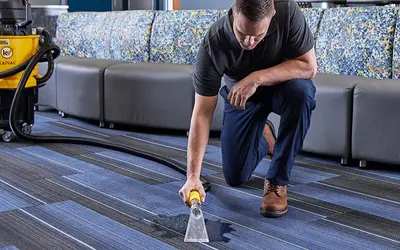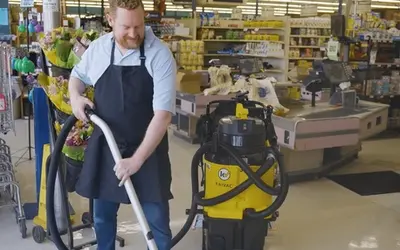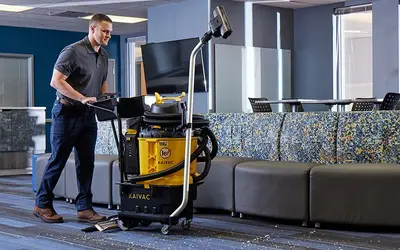A Daily Classroom Cleaning Checklist for Healthier Schools

In most schools, custodians clean classrooms daily. However, custodians frequently leave some of the germiest areas untouched. This inefficient approach to school cleaning leaves many germs in classrooms and leaves open the possibility of disease transfer. With a focused daily classroom cleaning checklist, you can protect students and teachers with a healthier classroom environment. Make sure your daily classroom cleaning checklist addresses the following areas.
Daily Classroom Cleaning Checklist
- Sinks and Faucets Your team may wipe out sinks, but that isn’t enough. According to research published in the Journal Of School Nursing, objects around sinks, including faucets and towel dispensers, are some of the most contaminated in school settings. Cleaning these areas for health involves removing the bacteria from areas where hands frequently touch. Using a rag runs the risk of cross-contamination. Thankfully, a Kaivac SmartTowel removes this concern. It’s numbered system helps ensure each side is used only once.
- Carpeting Custodians should always vacuum carpet and rugs to capture as much accumulated soil as possible, but the technique used determines how successful custodians are at removing dirt and contaminants. Kaivac’s KaiTurbine dry vacuum attachment, designed for use with the No-Touch Cleaning System, uses an air-driven beater bar to lift stubborn dirt from carpet. And because it’s powered by vacuum airflow, and not electricity, it is especially effective on damp entryway mats.
- Desktop and Surface Cleaning In the Journal of School Nursing report, researchers found that desktops played host to the most viruses and bacteria. Children in unclean classrooms were more than two times likely to miss class due to an illness, showing the importance of proper sanitation. Just like with sinks and faucets, using a cleaning solution and rag is not an effect system for getting desks clean. The Kaivac KaiFly cleaning system uses a motorized sprayer, microfiber trowel and high-quality squeegee to remove harmful contaminants. What’s more, it can remove more than 99.9% of those contaminants with just water.
- General Touch Points Any areas children touch repeatedly are spots where disease transfers. Have custodians focus on the handles of water drinking fountains, keyboards, cabinet doors, and other handles in a regular classroom. Each of these touch points could carry a virus that passes illness along and keeps children or teachers out of class. Whether a cleaning crew opts for disposable wipes or microfiber towels, make sure that a system is in place to avoid contaminating surfaces with germs from other areas that were cleaned.
Use a Daily Classroom Cleaning Checklist to Assure Quality
Classroom cleaning is a tall order for custodial crews. Use the research available and advanced Kaivac cleaning systems to address the biggest issues for your school system, and check off each point on this classroom cleaning checklist.
For more information about Kaivac cleaning machines and solutions for healthier classrooms, go here.


